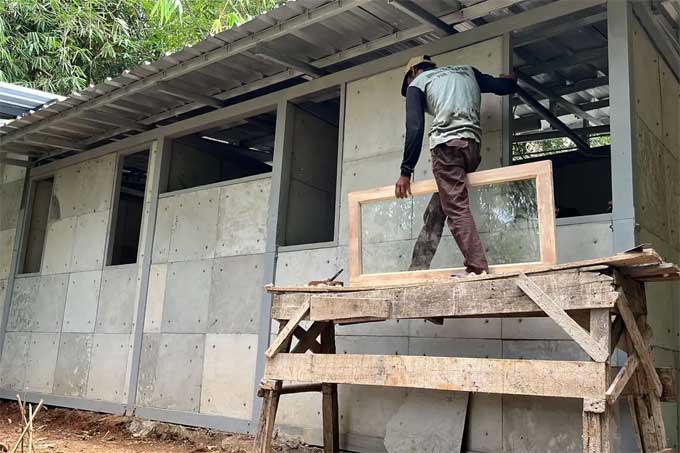
Next Big Thing in Construction: Recycled Nappies
Concrete is a popular building material made of a mixture of cement, sand, and other aggregates. Sand is an essential component of concrete, as it provides a workable consistency and forms a strong bond between the cement and other aggregates. Sand is also an important factor in the strength and durability of concrete.
The size and shape of the sand particles in concrete play a significant role in determining the strength and durability of the material. The larger the particles, the more space between them, allowing water to pass through more quickly. This reduces the amount of time and energy required to dry the concrete and leads to a higher strength.
It is estimated that 300,000 disposable nappies are disposed of on a daily basis, either incinerated or ended up in the environment. New housing construction methods have found a way of safely and constructively reusing these materials.
Can Nappies be as effective as Concrete?
The use of used nappies as a raw material for concrete is just as effective as the use of conventional materials, according to Japanese researchers.
An article published in Scientific Reports describes how waste nappies can replace up to 8% of the sand in concrete and mortar to build a single-story house without significantly affecting its strength.
First, chemical additives were used to clean the nappies, and then they were dried and shredded before they were mixed with concrete. After nappy infused concrete was poured in Indonesia, a small house was built, showing how this type of waste could be diverted from landfills to construct more affordable housing.
Disposable diaper concrete, in certain compositions, has also been shown to have identical mechanical properties and microbial content as conventional concrete.
A 1% diaper addition to concrete enhances internal hydration and produces the most durable, robust materials. The strength of a mix of up to 5% disposable nappies with concrete was a maximum at 28 days in contrast to other percentages compared to other percentages.
Importance of Sand as a Dwindling Resource
- As sand reserves are shrinking, over the coming decades, construction industries may have to cope with a skyrocketing cost of sand, an essential ingredient for concrete, plaster, and glass.
- After water, sand is the second most used resource on Earth, often dredged from rivers and mined along coastlines. Each year, an estimated 50 billion tons of sand are extracted for construction.
- According to a construction report, sand extraction is rising at an unsustainable rate of around 6% annually. The report therefore calls for a circular economy for sand and other building materials. Sand consumption can be reduced by recycling construction materials from demolition sites.
- As an alternative to virgin materials, waste products are already being used, such as old tires in playgrounds and glass in slabs. In addition, the University of Melbourne is experimenting with substituting cement for fly ash, which is a byproduct of coal burning.
- If the building regulations change, nappies could be added to sand as a supplement. Scientists have produced a low cost dwelling that complies with various countries' building standards by mixing nappies with concrete, a concept that is not entirely new.
- Scientists have created a low cost dwelling that meets Indonesian building standards by mixing nappies with concrete for the first time. Earlier research in the Indian Journal of Science and Technology published positive results from a Malaysian study in 2017.
- The super absorbent polymer contained in diapers is used to improve concrete's viscosity by turning it into a gel-like substance when wet.
Wrapping it Up
An alternative to dwindling sand reserves can be found in concrete made from used nappies as its replacement. There has long been a perception that disposable diapers are a major source of waste. Almost all of them end up in landfills, where they break down over hundreds of years because they cannot usually be recycled.
In addition to its role in strength and durability, sand affects the texture and color of concrete. The color of the sand also affects the color of the concrete. For example, white sand produces a whiter concrete than tan or brown sand.
Sand is also used to fill voids in a concrete mix. This helps to create a more consistent and uniform mix, resulting in a stronger and more durable material.
To get more details, watch the following video tutorial.
Video Source: News Happenings
Overall, sand is an essential component of concrete and plays an important role in its strength and durability. Sand is also used to create a more uniform mix and to fill voids, resulting in a higher quality product.


